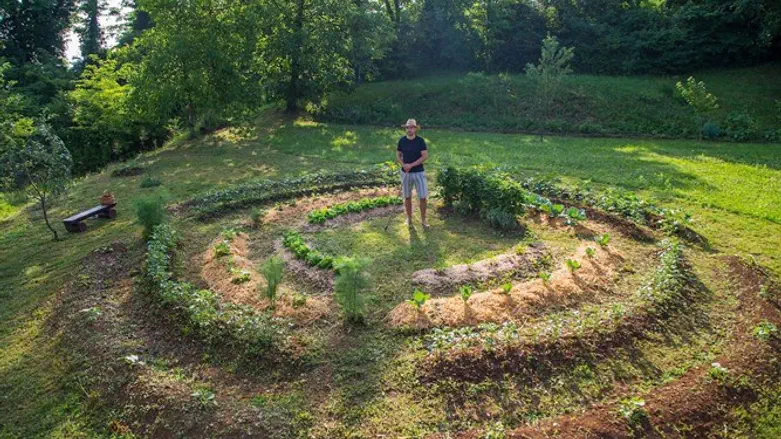
Permaculture is a blueprint for how we live our lives -- it is more than just some dry and dusty doctrine. It moves beyond concept and gives us a selection of practical solutions that we can use in our lives.
Permaculture was initially a word composed of both words permanent' and'agriculture'. However, now the scope is more comprehensive, and permaculture is more often defined as permanent culture'.
Permaculture principles enable us to create a civilization that may endure and flourish for generations to come. At its heart are three straightforward tenets or ethics:
-- Care for Earth.
-- Fair share. (which likewise entails returning the surplus into the machine.) Permaculture grew from a sustainable agriculture movement -- originally developed by Bill Mollison and David Holmgren in Australia from the 1970s -- and has since become a worldwide movement, inspiring individuals to participate and create positive change worldwide.
History Of Permaculture
Several individuals revolutionized the division of permaculture. In 1929, Joseph Russell Smith added an antecedent term as the subtitle for Tree Crops: A Permanent Agriculture. This book sums up his long experience experimentation with nuts and fruits as plants for human food and animal feed.
Smith saw the world as an inter-related entire and suggested mixed systems of trees and plants underneath. This book inspired many people to make agriculture more sustainable, such as Toyohiko Kagawa, who pioneered forest farming in Japan in the 1930s.
In Australian P. A. Yeomans' 1964 publication Water for Every Farm, he supports the definition of permanent agriculture, as a person who can be continued forever. Yeomans introduced an observation-based approach to land use in Australia in the 1940s and the Keyline Design to manage the distribution and supply of water from the 1950s.
Holmgren noted Stewart Brand's functions as an early influence on permaculture.
Other early influences include Ruth Stout and Esther Deans, who pioneered no-dig gardening, and Masanobu Fukuoka, who, in the late 1930s in Japan, began advocating no-till orchards and gardens as well as organic farming Bill Mollison, "father of permaculture" In the late 1960s, Bill Mollison and David Holmgren started developing ideas about secure agricultural systems around the southern island state of Tasmania. Dangers of the fast-expanding use of industrial-agricultural methods sparked these thoughts.
In their opinion, these methods were highly dependent on non- renewable sources. They also poisoned water and land, reduced biodiversity, and eliminated billions of topsoil from previously fertile landscapes. They responded with a design strategy known as permaculture. This expression was first made public with their book of the 1978 book Permaculture One.
Among a few of the more recognizable names who obtained their initial training inside Mollison's Permaculture Design Course (PDC) system would comprise Geoff Lawton and Toby Hemenway. Each of them has over 25 years of experience teaching and promoting permaculture as a sustainable method of growing food and providing individual needs.
Simon J. Fjell was a Founding Director of the Permaculture Institute in late 1979 and a teacher of the first Permaculture Design Course, having first met Mollison in 1976. He's since worked globally and is now listing a significant social venture on NASDAQ.
From the early 1980s, the concept had broadened from agricultural systems design towards sustainable human habitats. Following Permaculture One, Mollison further refined and developed the ideas by designing hundreds of permaculture sites and composing more detailed books, such as Permaculture: A Designers Manual. Mollison lectured in over 80 countries and educated his two-week PDC to countless pupils. [ citation needed ] Mollison"encouraged graduates to become teachers themselves and put up their own institutes and demonstration websites. This multiplier effect was crucial to permaculture's rapid growth."
But some critics suggest that this success came at the price of weakening permaculture's early social aspirations of moving from an industrial kind of society. They assert that the self-help version of permaculture schooling has affected the West of organizing students to the type of market-focused individualistic sets of social relationships permaculture initially opposed.
The permaculture movement also spread throughout Asia and Central America, together with the Hong Kong-based Asian Institute of Sustainable Architecture (AISA), Rony Lec leading the base of the Mesoamerican Permaculture Institute (IMAP) in Guatemala, and Juan Rojas co-founding the Permaculture Institute of El Salvador.
Source: (en.wikipedia.org)
What is Permaculture? And How Can Your Garden Benefit From It?
Permaculture is a philosophy for a sustainable, holistic way of life. Ecological researcher and author Bill Mollison and David Holmgren coined the term in 1978. They combined the words permanent and agriculture to make permaculture for a method of ecological farming. The two changed it to permanent and culture to incorporate individuals' social needs and their home.
To put it simply, permaculture works with nature rather than against it. In the wild, ecosystems regenerate by themselves and are self-maintaining. Permaculture professionals observe these natural processes and recreate them on their farms or in their backyards.
Permaculture draws from notions of agroforestry, applied ecology, organic farming, and sustainable growth. Methods to Develop regenerative systems with that knowledge include:
Rainwater harvesting and supply Lasagna mulching Composting
Rotational grazing
Building with natural substances.
As soon as you set the gardens, it requires little to no hindrance to be productive, so you won't have to work too hard.
Structures are designed and constructed of natural materials produced in the house. Forests supply trees, and dirt can be changed into cob or adobe bricks, for example.
What is Organic Gardening?
A natural garden avoids using synthetic fertilizers and pesticides. The idea is to grow plants without using toxic chemicals, using organic seeds and organic weed killers that are chemical-free. It is more than getting the ideal goods, it is about how you cultivate the soil to encourage the plants obviously. Compost piles, seed starting, and organic pest control will also be a part of any organic garden.
Organic Garden Tip: Pot early in the season so that it is going to be much easier to manage in the summertime.
There are a lot of benefits to organic gardening; we could not possibly list them all. Here is a couple. You can eat organic fruits and veggies right from the garden.
Additionally, they have higher vitamin and mineral content, and they won't have compound residue. Grow your own and save money on groceries. Birds, small animals, kids, and adults are protected from harmful pesticides. Do not forget, gardening is exercise. It increases blood circulation, uses muscles, and improves our health.
